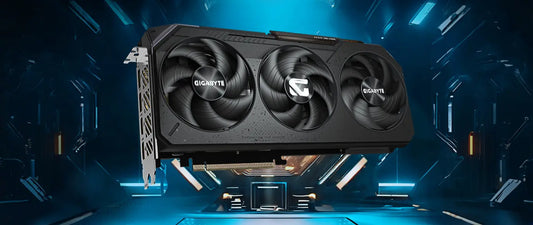NVIDIA RTX 5090 vs RTX 4090: Should You Upgrade?
Is RTX 5090 Better Than 4090?
Nvidia's RTX 5090, announced at CES 2025, is the successor to the RTX 4090. It offers significant improvements in performance and features. The RTX 5090 is priced at $1,999, a $400 increase over the RTX 4090's launch price.
Specifications Comparison
| Specification | RTX 4090 | RTX 5090 |
|---|---|---|
| CUDA Cores | 16,384 | 21,760 |
| Boost Clock Speed | 2.52 GHz | 2.41 GHz |
| VRAM | 24GB GDDR6X | 32GB GDDR7 |
| Memory Bandwidth | 1,008 GB/s | 1.8 TB/s |
| Power Consumption | 450W | 575W |
| Recommended PSU | 850W | 1,000W |
Performance Enhancements
The RTX 5090 boasts 21,760 CUDA cores, a substantial increase from the RTX 4090's 16,384 cores. This enhancement leads to improved rendering performance and faster processing times.
Despite a slightly lower boost clock speed (2.41 GHz compared to the RTX 4090's 2.52 GHz), the RTX 5090's architectural advancements and increased core count contribute to superior overall performance.

Memory and Bandwidth
The transition to 32GB of GDDR7 VRAM in the RTX 5090, up from 24GB of GDDR6X in the RTX 4090, allows for handling more complex textures and enhanced ray tracing capabilities. GDDR7 memory offers up to 33% faster speeds and 20% better power efficiency, resulting in smoother gameplay and higher frame rates.
Power Consumption and Requirements
The RTX 5090 has a higher power draw, with a TDP of 575W compared to the RTX 4090's 450W. Nvidia recommends a 1,000W PSU for systems incorporating the RTX 5090, indicating the need for robust power solutions to support this high-performance GPU.
DLSS Technology and AI Enhancements
One of the standout features of the RTX 5090 is the introduction of DLSS 4, Nvidia's latest iteration of Deep Learning Super Sampling technology. DLSS 4 utilizes advanced AI to predict and generate additional frames, significantly boosting performance and image quality. This technology enhances gaming experiences by providing higher frame rates and improved visual fidelity.
Real-World Performance
In practical gaming scenarios, the RTX 5090 demonstrates notable performance gains over the RTX 4090. For instance, in titles like Cyberpunk 2077, the RTX 5090 achieves approximately 28 FPS, while the RTX 4090 reaches around 21 FPS, indicating a 33% performance increase.
It's important to note that these performance improvements are more pronounced in games that support DLSS 4 and advanced ray tracing features. In titles without such support, the performance gap between the RTX 5090 and RTX 4090 may be less significant.
Considerations for Upgrading
While the RTX 5090 offers impressive advancements, potential buyers should consider factors such as increased power requirements, higher price point, and the current availability of DLSS 4 support in games. Additionally, the larger physical size of the RTX 5090 may necessitate compatibility checks with existing PC cases.
Conclusion
The RTX 5090 presents substantial improvements over the RTX 4090 in terms of performance, memory, and AI-driven technologies. However, the decision to upgrade should be based on individual needs, budget, and system compatibility. For gamers and professionals seeking top-tier performance and future-proofing, the RTX 5090 stands as a compelling option.



